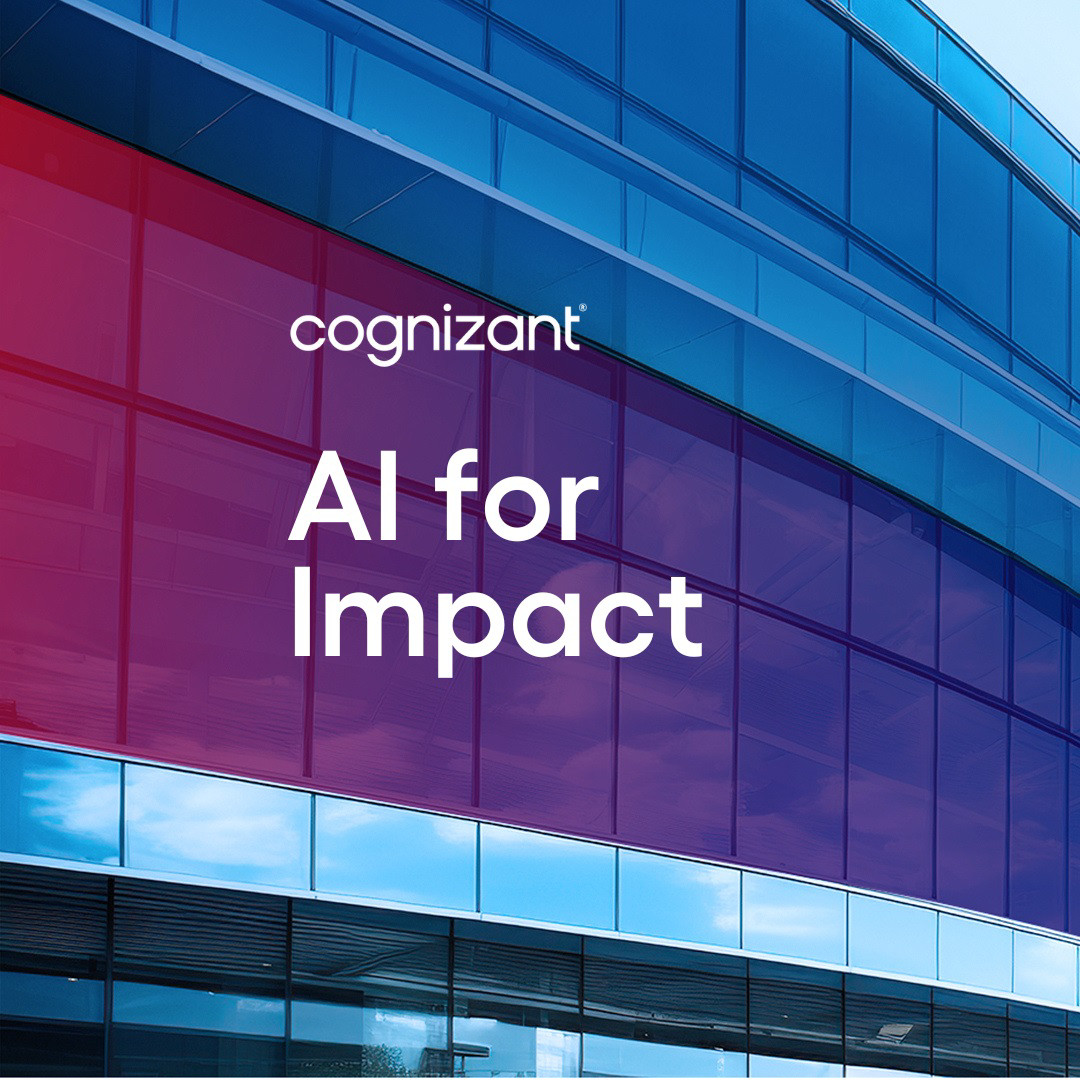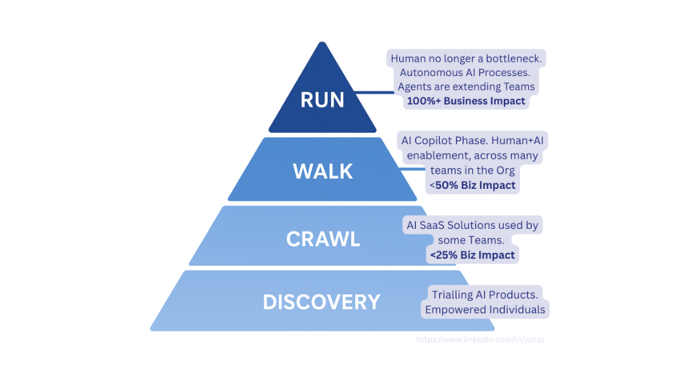Too many organisations stall at chasing double-digit gains — the equivalent of ‘rearranging deck chairs on the Titanic.’ Optimisation delivers necessary improvements, but the true competitive edge comes from reinventing processes for exponential impact. At the Run stage, value creation compounds, delivering a force multiplier effect that far outpaces incremental gains.
The Real Challenge: Coherence & Consistency
If the first wave of AI was about speed, the second is about trust.
Speed is no longer the bottleneck; the market is saturated with tools that make experimentation easy. The bottleneck is whether those experiments can be evaluated, governed, trusted, scaled and maintained. The challenge is The Day After The Pilot - The Day 2. The Road to Production is paved with own set challenges to grapple with, such Compliance aspect, Monitoring & Observability, Scaling, DevSecOps and an operational Service wrap.
The hard questions leaders must grapple with include:
How do we prevent documentation, decisions, and artefacts from drifting apart, causing confusion and risk?
These are not simply technical questions. They are organisational design challenges. When cloud adoption reached maturity, enterprises discovered that “lift and shift” delivered speed but not value. The answer was the Cloud Centre of Excellence (CCoE), a governance and enablement layer. It is a multidisciplinary capability spanning business, compliance, data, and engineering, ensuring adoption is safe, scalable, and aligned to strategic priorities. Let’s unpack how this works in the next section.
From Platform Teams to AI Centre of Excellence
Just as platforms accelerated cloud adoption, AI Centres of Excellence (AICoEs) will become the backbone of sustainable, enterprise-grade adoption of agentic AI. The analogy is the same: where the Cloud Centre of Excellence (CCoE) once guided strategy, governance, and tooling for cloud migration, the AICoE will define the rules of engagement for the agentic era.
That said, the scope is broader, the skillset deeper (See SME section above), and the cultural shift sharper.
AICoEs must bring together expertise across technology, business, compliance, and human factors, with executive leadership at the core given the business-wide impact. The remit stretches beyond infrastructure to encompass models, connectors, context frameworks, and trust controls as first-class assets.
To succeed, organisations will need new roles and capabilities embedded within their AICoE:
Model lifecycle owners to manage training, evaluation, deployment, and retirement of enterprise models.
This transition is both cultural and far reaching. Where the CCoE, successful Platform Rollout balanced speed and governance for cloud, the AICOE must reconcile autonomy with operating model changes, multi-system impact, and compliance in a far more dynamic environment. That means investing in both SME skills uplift and Core Change Management—ensuring teams are confident working alongside AI, not simply governed by it.
To keep the AICoE from becoming a bottleneck in itself, choose to run it like a small product company inside your company: opinionated defaults, open contribution, standards in code, and federated ownership where the centre teaches the organisation best practices, and approaches on ‘how to fish’—and then gets out of the way.
Context Engineering: The Enabler
What separates a hackathon vibed prototype from an enterprise-grade capability? Context.
Too often, new teams experimenting with advanced code assistants find themselves frustrated. Hours are spent “refining prompts” or nudging the assistant to produce the right outcome — but the real problem isn’t the tool, it’s the lack of (clean) context.
Just like a junior developer or a new hire, an AI agent cannot deliver value if it doesn’t understand the purpose of the solution, the business intent, or the architectural patterns it must align with. Without guardrails, it risks generating patchwork code that undermines coherence. With context — definitions of done, architectural principles, and clear ways of working — agents can extend the holistic system rather than fragment it. This is why Context Engineering is crucial to achieve consistent and coherent foundations for scaling agentic adoption across an Enterprise.
This is the discipline we call Context Engineering. Encompassing:
Without context, agents become unpredictable—a long turn-by-turn prompt loop to feed the agent with increasing amount of requirement details, as user course-corrects the resulting artefacts. This can be a long process and produce inconsistent results which may incur a higher operational cost. Conversely a more definitive (Vision, Role, Intent) with precise context, agents can be treated as more-reliable AI colleagues: predictable, auditable, and accountable.
For example, a Product Owner Compliance Agent (POCA) can be defined to translate business intent into stories while ensuring outputs meet regulatory requirements. A QA Agent can continuously generate and validate tests, catching errors before they reach customers. An Architecture Agent can enforce principles across microservices. Each of these is feasible today, provided they are given the right context.
Resourcing and Expertise: SMEs as Force Multipliers
A persistent myth is that AI reduces the need for skilled expertise. The opposite is true. AI amplifies the importance of SMEs because it is their knowledge that defines the guardrails and templates agents use. There is no shortcut to experience.
SMEs must codify what “good” looks like, translate governance into machine-enforceable rules, and supervise early outputs. In practice, this creates leaner, sharper teams. In our own delivery experience, output doubled while team size reduced from seven to three or four SMEs. But those SMEs were entrepreneurial problem solvers, able to bridge business and technology.
This is where industry domain expertise becomes decisive. Agentic adoption cannot be generic; it must be tailored to the regulatory, cultural, and operational realities of each sector. Healthcare, finance, energy, and retail will all require different guardrails and different maturity models.
What’s Next
The real opportunity lies in recognising that Agentic AI has the tangible impact of removing the human bottleneck, enabling 24/7 operations and fundamentally altering how value is created. And the self-reflection cue, - whether our organisations are ready to operate effectively with AI Agents in the Organisational and Operational Structures.
This is why the question for leaders is not whether AI can trim budgets, but how their organisation will adapt its operating model to embrace exponential change. Nimble competitors are already moving from incremental pilots to holistic reinvention, embedding agents across workflows and redefining what “business as usual” looks like. Competitive advantage will not come from shaving costs, but from re-architecting processes, rediscovering new business opportunities, and creating models where people and agents collaborate seamlessly.
The bar has shifted.
The real task now is to articulate your North Star, re-factor people and processes, and adopt AI as a disruptor & enabler of business transformation — not just a tactical KPI target. With domain expertise across industries and proven consulting frameworks, we meet you where you are — from first pilots to scaling full agentic operating models.
The time to act is now. Define your North Star, re-factor people and processes, and seize the exponential advantage.
















